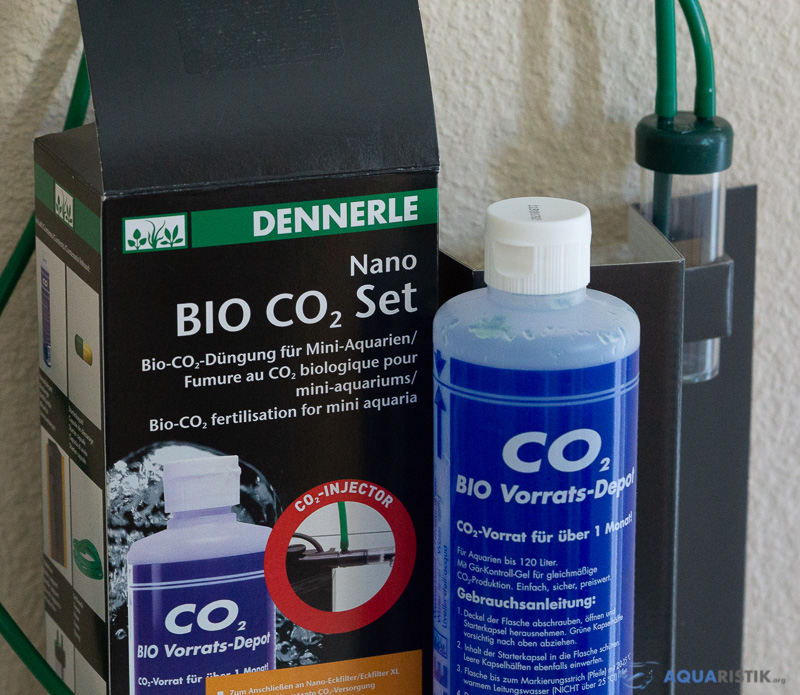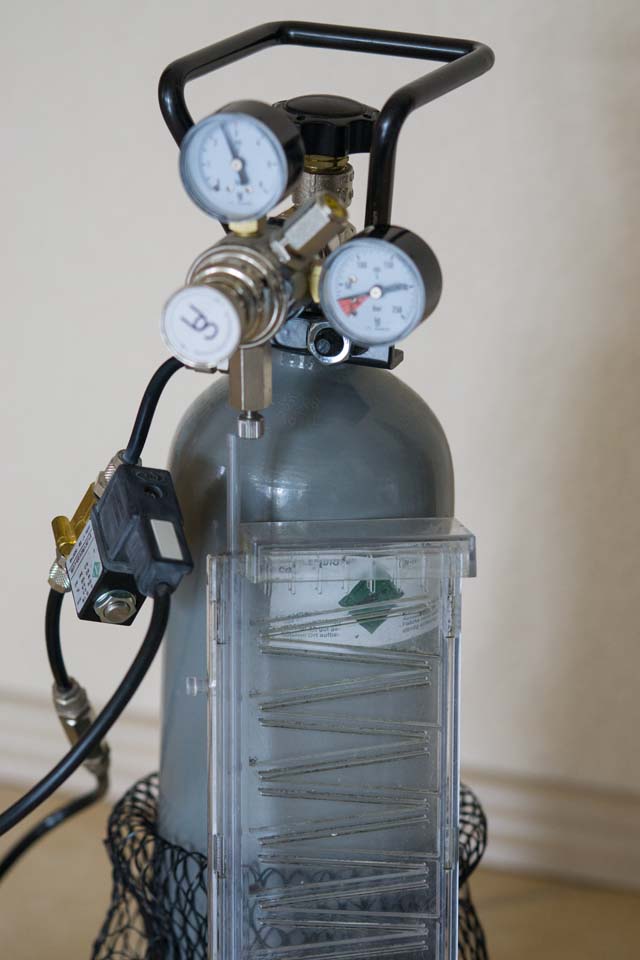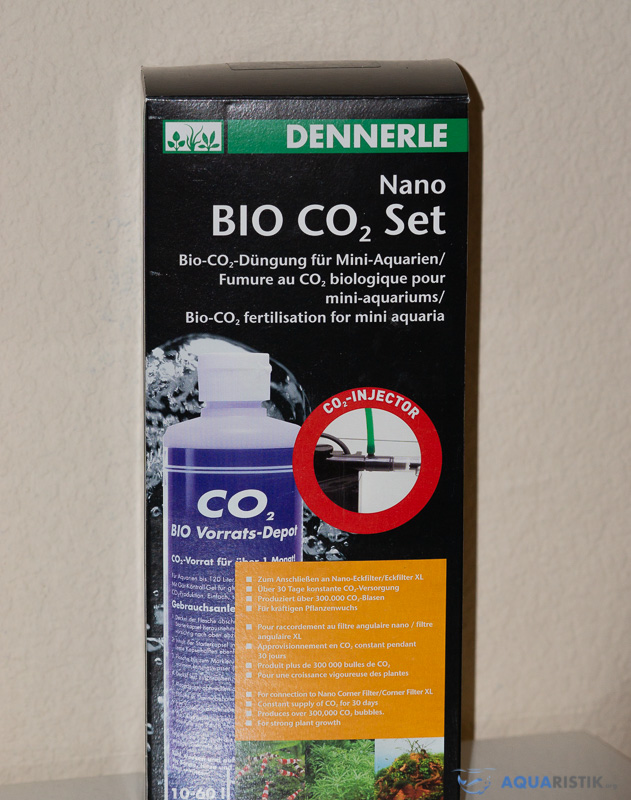Within the Question whether compressed gas / gas bottle Co2 system or Organic CO2 system the spirits argue. After we already have general information in our Advice on fertilization with Co2 and have explained its advantages and disadvantages and we have also dealt with diffusers, reactors and the Calculation of the Co2 requirement Having dealt with this, we now want to deal with the advantages and disadvantages of a compressed gas or a bio CO2 system.

What is the difference between a compressed gas and a bio Co2 system? What are the main differences and what sense does it make to rely on the respective model? But before we answer the questions, we would like to briefly explain the difference between the two techniques.
Difference Bio Co2 system and compressed gas Co2 system
Let's take a quick look at the differences between the two options for CO2 fertilization in an aquarium. In the CO2 system with a pressurized gas tank, the gas comes from a tank, or rather from a gas bottle, as the name suggests. These are available in different sizes and capacities. In addition, a distinction is made between these containers as to whether they are disposable or reusable. With reusable bottles from 2 grams or better 500 kg, you can have them refilled at the local pet shop. The pressure in the bottles is 2 bar or more. In addition, these containers are also tested by the TÜV and must have a corresponding seal.
But how does it compare to the compressed gas systems in the Bio Co2 systems. Here the gas is not filled and stored in a pressure bottle, but the gas is created or produced here. There are certain processes that produce organic CO2. As a rule, a mixture of yeast and sugar is always used. You either make this mixture yourself or you use purchased mixtures. In addition to yeast, water and sugar, cake glaze may also be needed, but it doesn't have to be. With these ingredients you can then produce the quantity / mass which then creates the CO2 gas in a fermentation process. This is mainly due to the yeast. If you don't want to do it yourself, Dennerle and Co also offer ready-made mixtures.
Of course, the whole thing only has a certain shelf life and you then have to renew the fermentation mass. So the main differences between a bio Co2 system and a compressed gas Co2 system are:
Advantages of a compressed gas CO2 system
Let's start with the advantages of a compressed gas system to supply the plants with the necessary CO2. Probably the biggest advantage is the very simple and safe handling of such a system. The containers are already filled and also checked in terms of pressure. With a proper installation according to the operating instructions, nothing should go wrong here.
In addition, such a container lasts quite a long time, depending on its size. A 2 kg bottle can usually supply a 200 liter tank with CO2 for up to a year. Of course, this always depends on the consumption of the plants, but these values also apply in principle.
If the compressed gas tank is then empty, you can have it filled quite cheaply at almost all pet shops or even at gas suppliers. The prices here are 10 to 20 euros per 2 kg bottle. Of course, you can also buy the CO2 in even larger containers.
If you maintain several aquariums, you can buy a 5 kg or even larger bottle and thus have enough CO2 for all aquariums. In addition, the pressure must be kept constant and adjusted if you supply several aquariums with it. We have already explained how the whole thing works in our instructions for the CO2 system for several aquariums.
button several
Especially when it comes to the use of diffusers and reactors, the use of a CO2 compressed gas system is easier, because the pressure that is very often required for these devices is available here. Many diffusers only work properly with a pressure of 1 bar or more. With a bio CO2 system, the constant pressure is usually a problem.
As you can see, there are a number of advantages that speak for a compressed gas container CO2 system. Here are the most important key points again.
- Long term and durability
- Easier application
- Can be cheaper
- Easier to deal with
- Can also be used for several aquariums
- More pressure available
Advantages of a BIO CO2 system
Of course, a bio Co2 system also has its advantages. Certainly the biggest is the cost. On the one hand, you have to differentiate between the acquisition costs, i.e. what such a system costs, and the maintenance costs. The maintenance costs for tucker and yeast are extremely low and a filling will usually not cost more than one euro. However, this will not last for a year either, but usually everything is over after 1 month and you have to start a new solution.
In addition to the maintenance costs, there are also the acquisition costs. Here, too, a lot can be saved, because the bio Co2 systems are usually always cheaper than the "right" Co2 systems.
Of course, it is always possible to fill up the fermentation solution and thus the gas indirectly with a Bio Co2 system yourself and no dealer or external partner is required. This also makes refilling easy, although this should no longer be a problem today, even with a compressed gas Co2 system. Let's summarize the main features and advantages again here.
- Mostly cheap entry
- You can refill it yourself
- No external filling necessary
Basic disadvantages of a bio and compressed gas Co2 system
Both variants of Co2 generation do not come without disadvantages. Be it because of the costs or the use. With an organic system, it can be quite complicated to come up with a new solution again and again. You will also quickly reach the limits here with greater consumption. Of course it is not a problem in the nano aquarium or in smaller tanks.
With the compressed gas Co2 system you have to dig deeper into your pocket, but then you have the advantage that refilling is quite convenient and doesn’t have to be done that often. In addition, handling is much easier and the pressure can be constantly regulated.
With a bio CO2 system, you should also make sure that everything is closed properly, otherwise it could lead to a nasty mess when the fermentation liquid escapes.

Which one should I buy now? Compressed gas CO2 system or BIO CO2 system?
As you can see from the pros and cons, there is no basic bio or basic CO2 from the pressurized gas tank. This must always be weighed individually.
Basically, everyone has to decide for themselves, but there are some criteria that speak for organic or pressure Co2. This is usually determined by the size of the system. Supplying a system with 300 liters or more with bio is already quite difficult. However, small tanks are very well suited for Bio Co2 and also offer a fairly inexpensive entry into fertilization with carbon dioxide.







